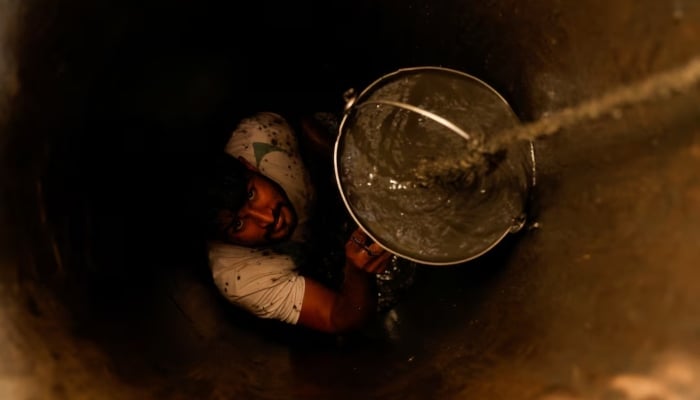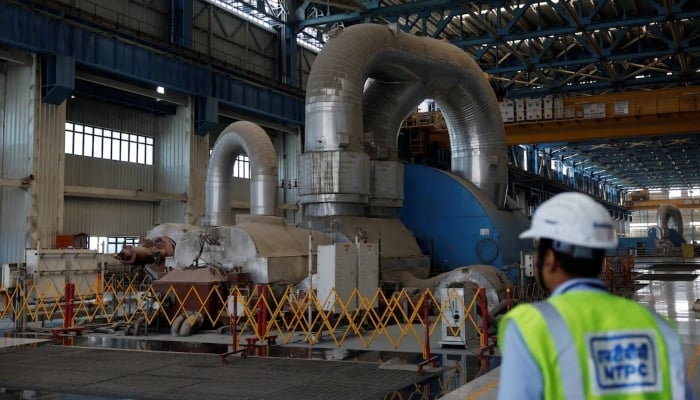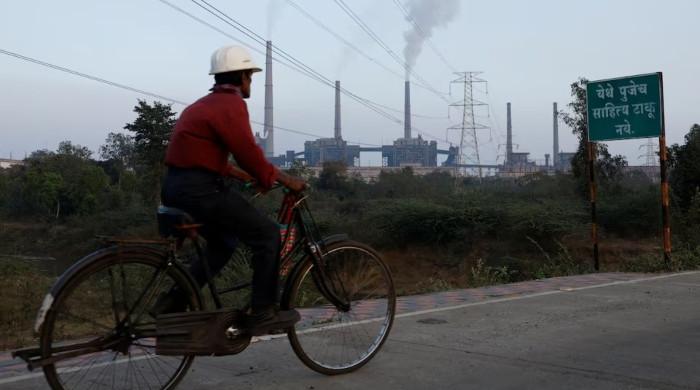- Many shortlisted projects located in water-stressed areas.
- Water access an afterthought for thermal plant operators.
- Expansion likely to fuel further conflict between residents and industry.
CHANDRAPUR: April marks the start of the cruelest months for residents of Solapur, a hot and dry district in western India. As temperatures soar, water availability dwindles. In peak summer, the wait for taps to flow can stretch to a week or more.
Just a decade ago, water flowed every other day, according to the local government and residents of Solapur, some 400km inland from Mumbai.
Then in 2017, a 1,320-megawatt coal-fired power plant run by state-controlled NTPC began operations. It provided the district with energy – and competed with residents and businesses for water from a reservoir that serves the area.
Solapur illustrates the Catch-22 facing India, which has 17% of the planet’s population but access to only 4% of its water resources. The world’s most populous country plans to spend nearly $80 billion on water-hungry coal plants by 2031 to power growing industries like data centre operations.
The vast majority of these new projects are planned for India’s driest areas, according to a power ministry document reviewed by Reuters, which is not public and was created for officials to track progress.
Many of the 20 people interviewed by Reuters for this story, which included power company executives, energy officials and industry analysts, said the thermal expansion likely portended future conflict between industry and residents over limited water resources.
Thirty-seven of the 44 new projects named in the undated power ministry shortlist of future operations are located in areas that the government classifies as either suffering from water scarcity or stress. NTPC, which says it draws 98.5% of its water from water-stressed areas, is involved in nine of them.
NTPC said in response to Reuters‘ questions that it is “continuously striving towards conservation of water with best of our efforts in Solapur,” including using methods like treating and reusing water. It did not answer queries about potential expansion plans.
India’s power ministry has told lawmakers in parliament, most recently in 2017, that the locations of coal-fired power plants are determined by factors including access to land and water and that state governments are responsible for allocating water to them.
Access to land is the dominant consideration, two federal groundwater board officials and two water researchers told Reuters.
India’s complex and arcane land laws have delayed many commercial and infrastructure projects for years, so power operators under pressure to meet burgeoning demand pick areas where they are likely to face little resistance, said Rudrodip Majumdar, an energy and environment professor at the National Institute of Advanced Studies in Bengaluru.
“They look for areas with easy land availability – minimum resistance for maximum land — even if water is available only far away,” he said.
The federal power ministry, as well as energy and water authorities in Maharashtra state, where Solapur is located, did not respond to queries.
Delhi attempted to reduce its reliance on coal before reversing track after the COVID pandemic. It has invested heavily in renewable energy sources like solar and hydro, but thirsty thermal power will still be dominant for the coming decades.
India’s former top energy bureaucrat Ram Vinay Shahi said ready access to power was strategically important for the country, whose per-capita power consumption is far lower than its regional rival China.
“The only energy resource we have in the country is coal,” he said. “Between water and coal, preference is given to coal.”
‘Nothing’ in Solapur?
Solapur resident Rajani Thoke plans her life around water in high summer. On days with supply, “I do not focus on anything other than storing water, washing clothes and such work,” said the mother of two, who strictly polices her family’s water use.

Sushilkumar Shinde, the federal power minister who approved the Solapur plant in 2008, when the area had already been classified “water scarce,” told Reuters he helped NTPC procure the land by negotiating payments to locals.
The member of the opposition Congress party, who won election to retain Solapur’s parliamentary seat a year after the plant’s approval, defended the operation on grounds of NTPC’s sizable investment. The $1.34 billion plant generated thousands of jobs during its construction and now provides part-time employment to about 2,500 locals.
“I made sure farmers got good money for the land NTPC acquired,” he said, adding that mismanagement by local authorities was to blame for water shortages.
Solapur municipal official Sachin Ombase acknowledged that water distribution infrastructure had not kept up with population growth, but said that authorities were trying to address the problem.
Shinde said “there was nothing” in Solapur in 2008 and that residents who received land payments had no reason to oppose the plant.
Researcher Shripad Dharmadhikary, who founded environment advocacy group Manthan Adhyayan Kendra, said local politicians often supported splashy infrastructure projects to boost their popularity.
Any “problems come up much later,” he said.
Even before the Solapur plant started operating, there were signs of the trouble to come. The first of its two units was supposed to start generating power by the middle of 2016, but it was delayed by more than 12 months because of years of severe water shortages, according to a 2020 regulatory filing.
The absence of nearby water resources meant the station ended up drawing on water from a reservoir about 120km away. Such distances can sharply increase costs and the risk of water theft, said Dharmadhikary and two plant sources.
As of May 2023, the station is among India’s least water-efficient, according to the latest available federal records. It also has among the lowest capacity utilisation rates of coal-fired plants, according to data from government think-tank NITI Aayog.
NTPC said its data indicates the Solapur plant has an efficiency ratio in line with the country’s norms.
Indian stations typically consume twice as much water as their global counterparts, according to the Delhi-based Centre for Science and Environment think-tank.
Solapur plant officials told reporters in March that capacity utilisation will improve with increasing demand, indicating that water consumption could surge in the future.
A forthcoming survey on water use in Solapur led by state groundwater authorities and reviewed by Reuters showed that irrigation demand in the district outstrips supply by a third.
Dharmes Waghmore owns farmland a few miles from the plant and said that developing it would provide more financial security than his current casual work.
But he said borrowing money to develop the land by drilling a bore well is too risky: “What if there’s no water?”
Kuladeep Jangam, a top local official, said authorities were struggling to draw businesses to Solapur.
The lack of “water neutralises all other pull factors,” he said.
Thirst for water
Since 2014, India has lost 60.33 billion units of coal-power generation across the country – equivalent to 19 days of coal-power supply at June 2025 levels – because water shortages force plants to suspend generation, according to federal data.

Among the facilities that have struggled with shortages is the 2,920MW Chandrapur Super Thermal Power Station, one of India’s largest.
Located about 500km northeast of Solapur but also in a water-stressed area, the plant shuts several of its units for months at a time when the monsoon delivers less rain than usual, according to NITI Aayog data.
Despite the challenges, the plant is considering adding 800MW of new capacity, according to the power ministry list seen by Reuters and half a dozen sources at Mahagenco, which operates the station.
The document indicates the plant hasn’t identified a water source for the expansion, though it has already sourced its coal.
State-owned Mahagenco did not respond to Reuters‘ questions.
The plant’s thirst for water has previously led to tensions with residents of nearby Chandrapur city. Locals protested the station during a 2017 drought, prompting officials such as local lawmaker Sudhir Mungantiwar to order it to divert water to homes.
Mungantiwar, however, says he supports the expansion of the plant, which he hopes will lead to it retiring water-inefficient older units.
But the station has already delayed a plan to decommission two polluting and water-guzzling power units with a capacity of 420MW by about seven years, citing instructions from the federal government, the company sources said.
The Indian government asked power companies not to retire old thermal plants until the end of the decade due to a surge in demand following the pandemic, Reuters has reported.
Chandrapur resident Anjali, who goes by one name, said she is resigned to visiting a tap installed by the station near one of its gates for drinking water.
“We’re poor, we make do with whatever we can get,” she said.


